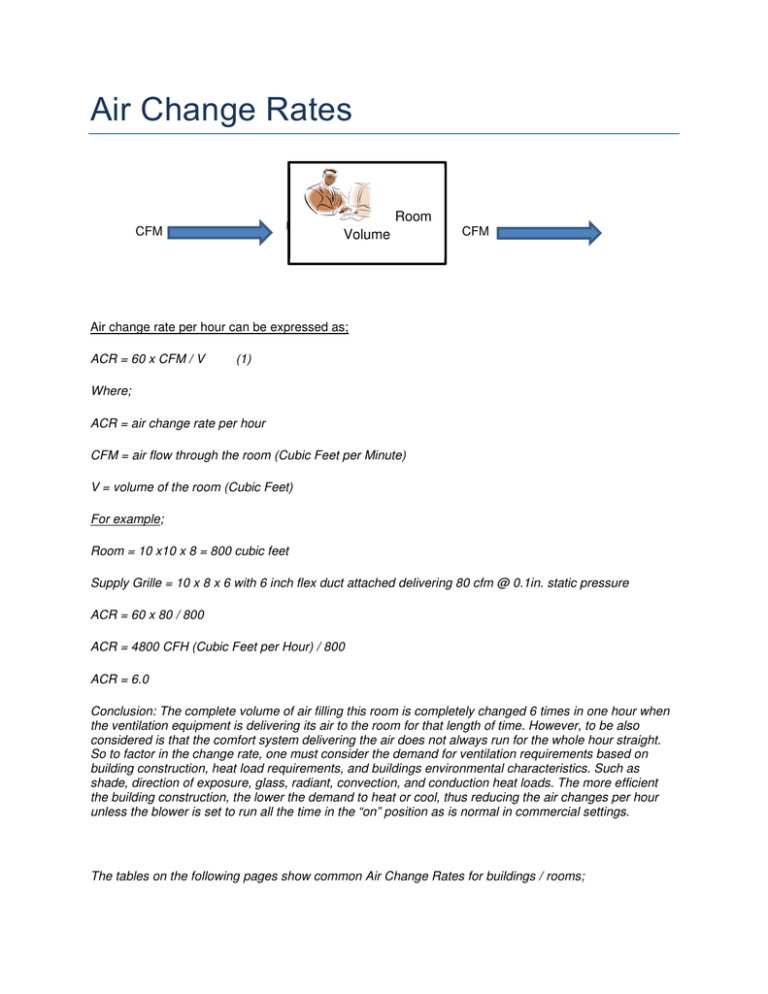

Increase total airflow to increase room air mixing and reduce viral particle concentration and subsequent exposure potential.**.Rebalance or adjust HVAC systems to increase total airflow to occupied spaces when possible.
Air changes per hour calculator professional#
Some of the following interventions are based on COVID-19 Technical Resources published by ASHRAE (a professional organization formerly known as the American Society of Heating, Refrigerating, and Air Conditioning Engineers). However, the overall transmission reduction is less likely to apply to people who are very close (e.g.

These interventions are intended to lower transmission risk by lowering the concentration of infectious aerosols in a room. These ventilation interventions can reduce the spread of disease, but they will not eliminate risk completely. Not all interventions will work in all scenarios and their selection must be carefully evaluated prior to adoption. Although it isn’t known exactly how much the concentration of viral particles in air needs to be reduced to start reducing risk of viral infection, ventilation mitigation strategies still provide a reasonable approach to reducing risk. The lower the concentration, the less likely viral particles can be inhaled into the lungs (potentially lowering the inhaled dose) contact eyes, nose, and mouth or fall out of the air to accumulate on surfaces. When indoors, ventilation mitigation strategies can help reduce viral particle concentration. Get answers to Frequently Asked Questions below about ventilation and safe building practices during and after the COVID-19 pandemic.Building owners and operators can participate in the Clean Air in Building Challenge to improve indoor air quality and protect public health.Implementing multiple building-level mitigation strategies at the same time is consistent with CDC’s layered approach and will increase overall effectiveness of ventilation interventions.The building owner or operator should identify which strategies are appropriate for each building throughout the year. While the mitigation strategies can be universally applied across many indoor environments, applying them to different building types, occupancies, and activities under environmental and seasonal changes can be challenging.Ventilation system upgrades or improvements can increase the delivery of clean air and dilute potential contaminants. Buildings that provided healthy, code-compliant indoor air quality prior to the pandemic can be improved for pandemic and post-pandemic occupancy using less costly interventions.Protective indoor ventilation practices can reduce the airborne viral concentrations and the overall viral exposure to occupants. Indoors, the concentration of viral particles is often higher than outdoors. Airborne viral particles spread between people more readily indoors than outdoors.An important principle to remember when contemplating mitigation strategies is to “First do no harm.” Building owners and operators should strongly consider seeking expert consultation when considering mitigation strategies if they lack knowledge and experience in implementing those strategies.*The information has been put together as a guide. Then simply divide the CFH by the volume of the room.įor a more extensive overview and to give you a better understanding, here’s a table of the average air changes depending on the room įactory buildings, with fumes or moisture

Then calculate the volume of the room by multiplying the room height times the width times the length. In simple terms, change the CFM (Cubic Feet per Minute) into Cubic Feet per Hour(CFH). Xpelair Toilet/Bathroom Centrifugal Extractor Fan


 0 kommentar(er)
0 kommentar(er)
